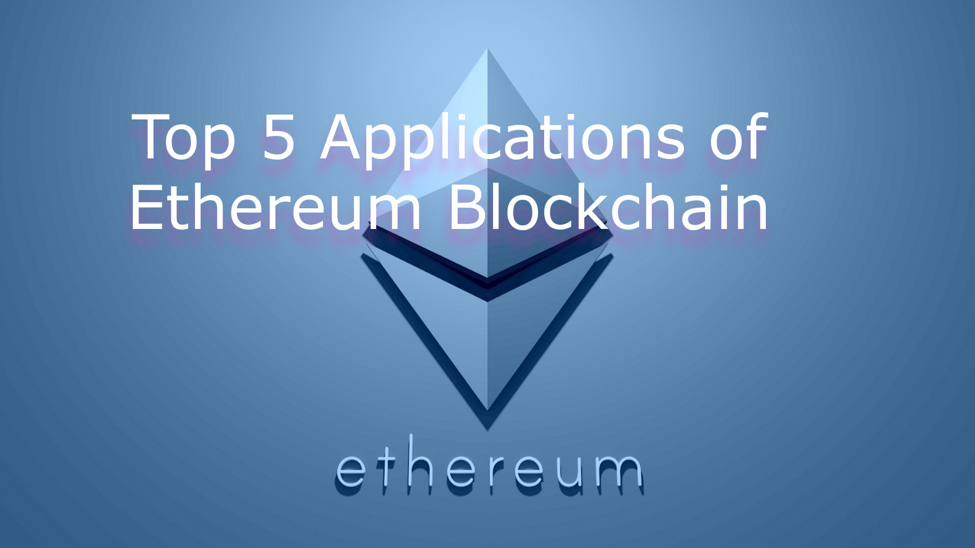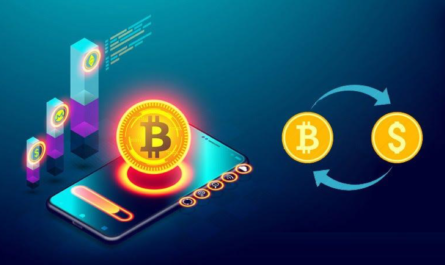Ethereum is not dubbed as the mother of DApps for no reason. It’s adding value to several industries with a host of original solutions to well-established solutions.
To start, Ethereum is a blockchain platform that allows anyone to run decentralized and open applications on it. This platform is fueled by ‘Ether’ the currency used to pay miners for verifying transactions on the blockchain. Ethereum’s ability to be immutable and transparent makes it an ideal platform for products and applications that need to run on an open network. While Bitcoin pioneered blockchain technology as the first cryptocurrency, Ethereum has expanded on Bitcoin’s decentralized digital currency by building a global network that strengthens the interconnected marketplace of decentralized applications (DApps). Ethereum’s use cases are extensive and expanding fast in fintech, gaming, healthcare, real estate, automobile and many more industries. This is the core reason why the evolving team of developers from a software or game development company are working very hard towards the development of innovative decentralized applications which will be delivering improved efficiency, security, and decentralized equity to blockchain projects and industries worldwide.

Contents
Ethereum Blockchain
While Bitcoin’s innovative decentralized network and cryptocurrencies were a novel achievement, Ethereum has expanded on its predecessor’s imagination of decentralized payment systems building a global computer network that connects users to a marketplace of decentralized apps offering unparalleled efficiency, security, and user control.
Through its ground-breaking features like smart contracts, Ethereum is used for various innovative applications in finance, gaming, advertising, identity management, and supply change management. The Ethereum blockchain is fueled by its native cryptocurrency — ether (ETH) and it allows developers to create new types of ETH-related tokens that power Dapps using smart contracts. The most widespread ETH-based cryptocurrencies are built on the ERC-20 token standard. Ethereum smart contracts are usually self-executing contracts that facilitate, corroborate, and enforce transactions on the blockchain, and are an essential innovation in Ethereum and blockchain.
How the Ethereum works?
Ethereum gets controlled by codes and not by any third party or entity. Several pieces mentioned here come together to ensure that Ethereum functions as it should.
Smart Contracts
The significance of Ethereum is to have a system that is not controlled by a third party but by codes induced by Smart Contracts. Smart Contracts are involved in any cryptocurrency and executed automatically when specific conditions are met without external help. Although they are popularly known for their Ethereum usage, they are not restricted to it and can be used outside Ethereum. Bitcoin is another crypto that supports basic Smart Contracts, but its applications are limited compared to Ethereum’s.
Ethereum Virtual Machine
The Ethereum virtual machine executes the Smart Contracts. It helps translate the smart contracts written in a computer language that can’t be read into a language (bytecode) that they can read. The EVM can execute at least 140 different codes with specific tasks.
Ethereum Blockchain
Ethereum Blockchain is responsible for storing the history of all the smart contracts executed. Several nodes from all over the world store a copy of the entire blockchain. Thousands of computers process Smart Contract whenever executed to guarantee that all the stated rules were complied with. The nodes are not just limited to storing transaction details. They also store accounts, Smart Contract code, and Smart Contract state. Every node follows the same rule set to verify a transaction, while they all are connected.
Ether
As mentioned earlier, Ether is Ethereum’s native cryptocurrency. Ether is stored in accounts and there are two types. Externally owned accounts and Contract accounts – externally owned accounts are used to hold and send Ethers by users, and Contract accounts are accounts that hold Smart Contracts.
Proof-of-work
Once a block of a transaction is created, miners attempt to get the accurate value of the block and keep generating the values until they get it. A hash value is then sent across the network for the nodes to verify when the miner finds it. Once validated, the miner receives the Ether it unlocked while discovering the hash.
Real-World Applications of Ethereum Blockchain
Blockchain technology’s core features include decentralization, automation, transparency, and immutability. These elements can be enforced in various industries, creating several use cases. Below are what we believe to be the most relevant applications of Ethereum Blockchain for enterprises, industries, and governments.
Building Decentralized Finance (DeFi)
It’s probably the most promising real-world application of Ethereum. DeFi refers to the transition from traditional centralized financial systems to peer-to-peer finance enabled by decentralized technologies built on Ethereum. People are creating and participating in this new economic system that sets new benchmarks for financial access, opportunity, and access.
Well-known for building various decentralized applications, it includes Smart Contract-powered loans, minting of stablecoins, and decentralized exchanges. One significant in this category is MakerDAO, which through the use of a detailed Ethereum Smart Contract has facilitated the creation of a stablecoin (DAI) backed up by Ether and is always at $1.
Tokenizing real-world assets
Many believe the security token market to be a multi-billion idea, and Ethereum could be one of the platforms that facilitates this shift. Security tokens are a blockchain-based representation of real-world assets like stocks, precious metals, real estate, and more. Once you tokenize these assets on a blockchain, issuers can transfer and transact in them more conveniently than if they just had a contractual representation.
Tokenizing assets has been achieved in many different ways, depending on both the assets being tokenized and their country. All tokenization methods need one characteristic: a proper legal structure that connects the token and asset. It means that companies or teams that tokenize an asset need robust legal guidance and structuring so that the tokenized asset is backed up by the legal system of the respective country.
Enterprise Ethereum
Enterprise Ethereum is customized software and networks based on Ethereum generated for private companies and businesses. These networks are permissioned, which means that enterprise clients maintain control over the architecture, users, and validators. Simply put, it is the private or permissioned blockchain version of the public Ethereum codebase. Even if these private chains are separated from the public instances, they can still make good use of the public Ethereum network. However, enterprise Ethereum doesn’t have a single product yet. Instead, providers offer Enterprise Ethereum by modifying the existing Ethereum clients based on the need of the enterprise. This way, all the private networks would have different results based on the requirements.
Non-Fungible tokens (NFTs) on Ethereum
NFTs are unique, impenetrable, and probably insufficient digital assets valuable in gaming, art, and ensuring the origin of luxury goods. NFTs have drawn an increasingly mainstream audience to cryptocurrency and blockchain technology. These tokens and assets can be attached to unique items and are not interchangeable with other things. NFT provides value to gaming, art, music, real estate, and more in terms of digital currency. That’s why they are secured on the Ethereum blockchain, and only a single person can own them at once. All NFTs are unique and cannot be copied and pasted into existence while being compatible with everything built on the Ethereum platform.
Decentralized Autonomous Organizations (DAOs)
DAOs are a safe and productive way to work with like-minded people globally. They can be seen as an Internet native business collectively owned and managed by its members and function based on Smart Contracts. They are internet based with built-in treasuries that you cannot access without getting approved by the group. They conclude by proposals and voting to confirm that everyone in the group can make their arguments. There is no CFO or CEO, and the rules that supervise their spending are part of the DAO code. The codes are transparent, and so are their activities, on top of which they operate a democratic system. Many DOAs including MolochDOA and MetaCartel, operate similarly to the original DOA combining user funds to offer assistance to Ethereum entrepreneurs.
Finally
There is a reason why Ethereum is currently the second-largest blockchain in the world. Ethereum has been a network of choice for innovation in the blockchain and cryptocurrency sphere. Due to its flexibility and robustness, new applications keep on emerging and increased stability in the future carry on supporting development. It offers a wide range of use cases, and we have highlighted some prominent ones in this post.



